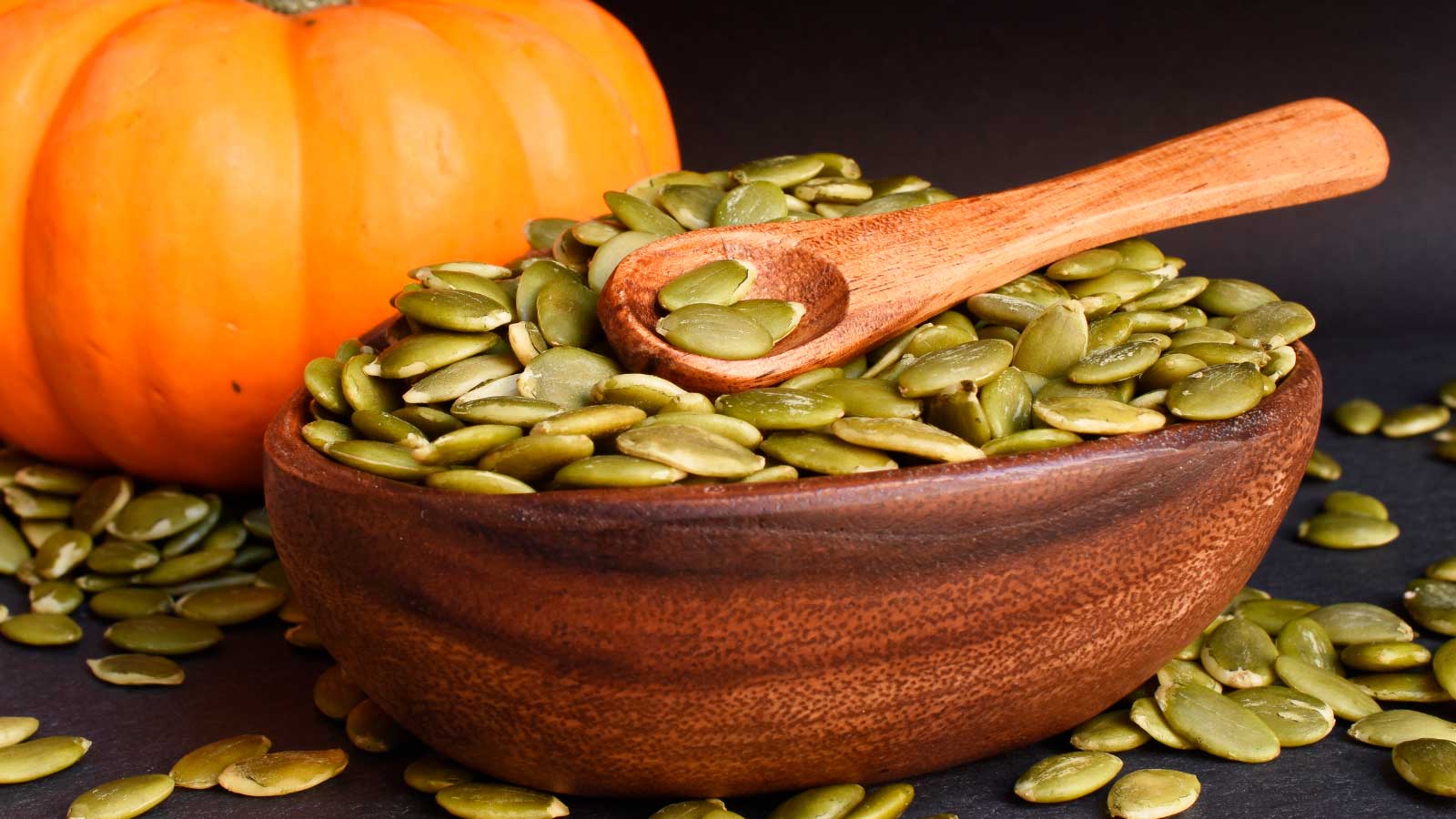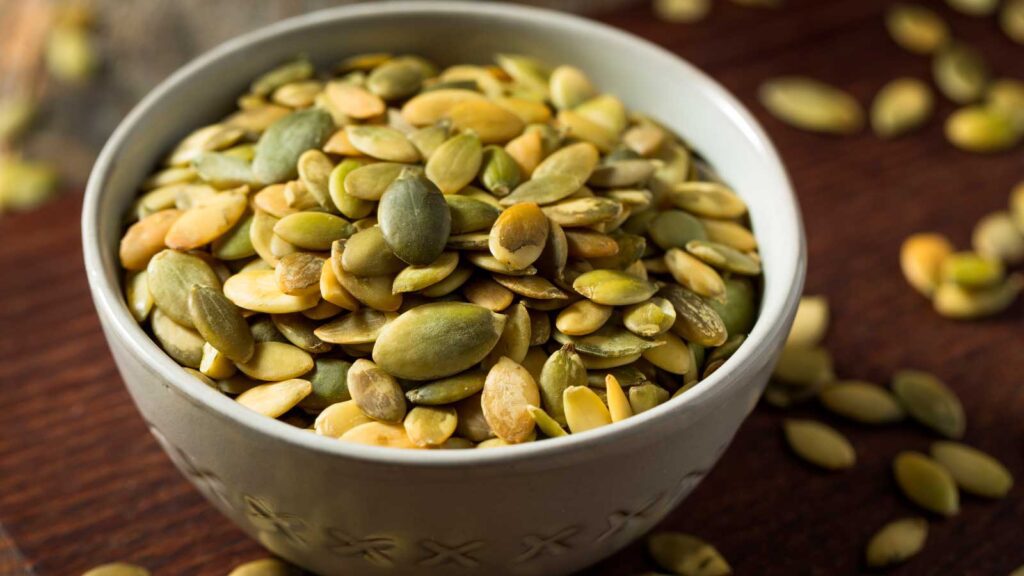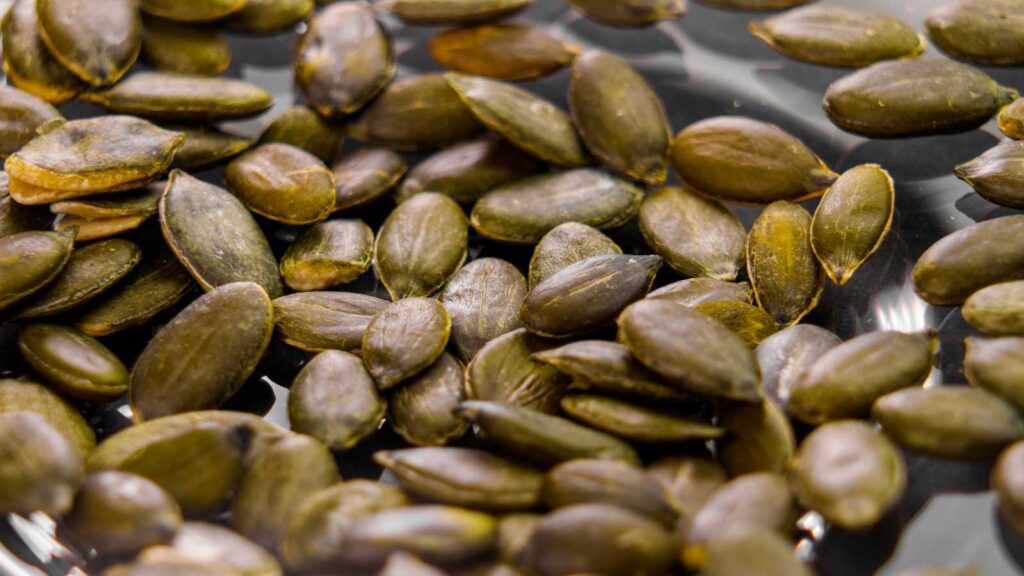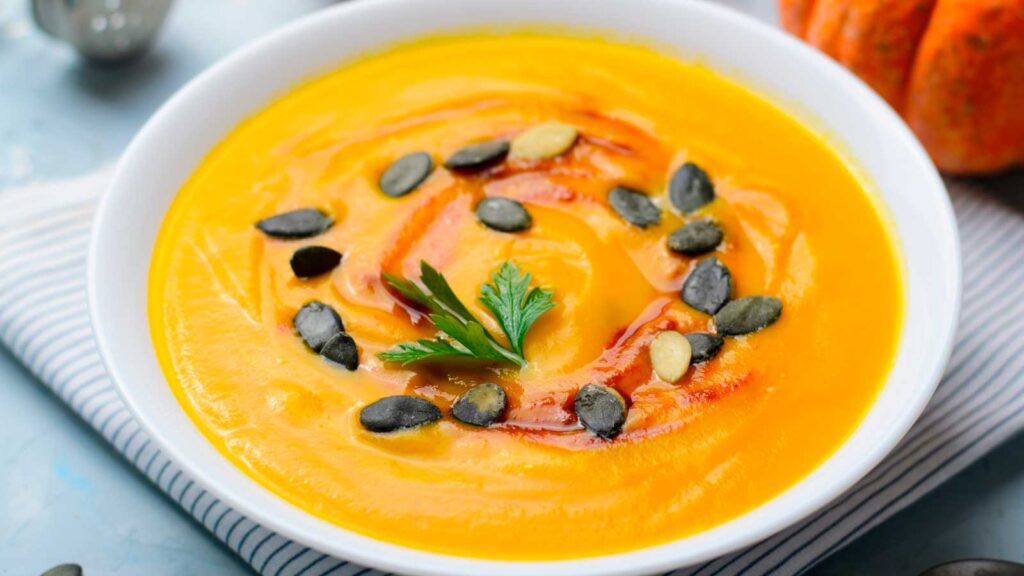Pumpkin Seed
The pumpkin seed has been gaining prominence in kitchens and markets due to its versatility and distinctive flavor. Used in recipes ranging from crispy snacks to more elaborate dishes, this delicacy is also known for its variations and applications in different contexts.
With the increasing interest in natural ingredients and sustainable cooking methods, the pumpkin seed has become a frequent choice for those seeking innovation without abandoning tradition.
This article was developed with you in mind, who wishes to learn more about the pumpkin seed and its various applications. We have divided the content into topics that cover everything from the process of selecting the product to storage tips and creative recipes.
At the end, an FAQ will clarify the main doubts about this ingredient. Follow along and discover how the pumpkin seed can transform your meals and inspire new practices in the kitchen!
Understanding the Pumpkin Seed
The pumpkin seed is the inner part of the pumpkin, extracted during preparation or harvest. Often, pumpkin seeds are considered merely a byproduct, but nowadays they stand out as an important item in both cuisine and art.
Each pumpkin seed undergoes processes that can be adapted to the needs of each recipe. From cleaning to roasting, the preparation preserves its characteristic flavor and texture, making the pumpkin seed appreciated in various cultures. Additionally, its use extends to both sweet and savory dishes, revealing a versatility that surprises both chefs and enthusiasts of good cuisine.
Characteristics and Benefits
- The pumpkin seed features a thin shell and a texture that becomes crunchy after preparation.
- Pumpkin seeds can be enjoyed roasted, added to salads, or used in various recipes.
- The ease of preparation and adaptability of the pumpkin seed make it a popular ingredient in markets and specialized fairs.

Where to Buy Pumpkin Seeds
Finding high-quality pumpkin seeds is essential to ensure the success of your dishes. Below, we list the main options for purchasing this ingredient.
Physical Stores
In many cities, it is possible to find pumpkin seeds in supermarkets, organic markets, and specialized natural product stores. In these establishments, consumers can closely check the quality and origin of the pumpkin seeds.
- Local markets: Visit local fairs and neighborhood markets, where regional producers offer fresh and carefully selected products.
- Natural product stores: These points of sale usually work with ingredients that value quality and sustainable farming methods.
Online Shopping
The internet is a great option for those looking for convenience. Several online stores offer pumpkin seeds with home delivery.
- Specialized e-commerce: Websites that focus on natural products often have a variety of options for pumpkin seeds.
- Online marketplaces: Large marketplaces allow you to compare prices and reviews, helping you choose the best pumpkin seeds available.
Shopping Tips
- Check the origin: Prefer suppliers who provide clear information about the origin of the pumpkin seeds.
- Assess the packaging: Choose products that are properly packaged to ensure the preservation of flavor and crunchiness.
- Read reviews: Check comments from other consumers to confirm the quality of the product.

How to Consume Pumpkin Seeds
The pumpkin seed can be consumed in various ways, allowing you to experience different flavors and textures. Check out the following suggestions to make the most of this ingredient.
Basic Preparation
One of the simplest ways to consume the pumpkin seed is to prepare it at home.
- Cleaning: Remove impurities and residues from the pumpkin seed by washing them in running water.
- Drying: Let the pumpkin seeds dry in a well-ventilated area or use a food dehydrator.
- Roasting: For a crunchy touch, roast the pumpkin seeds in a low-temperature oven, stirring occasionally.
Direct Consumption
The pumpkin seed can be consumed as a healthy and tasty snack.
- Snack: Serve the roasted pumpkin seeds as an appetizer during gatherings with friends or family.
- Complement: Add the pumpkin seeds to yogurts, granolas, or salads to give them a special touch.
Incorporating into Recipes
The versatility of the pumpkin seed allows it to be included in a variety of dishes.
- Salads: Sprinkle the pumpkin seeds over greens for a contrast of textures.
- Breads and Cakes: Use flour made from pumpkin seeds for innovative recipes that add flavor and nutrients.
- Sauces and Spreads: Grind the pumpkin seeds and mix with seasonings to create sauces that complement various dishes.
Creative Usage Suggestions
- Snack Mix: Combine the pumpkin seed with other seeds and nuts for a nutritious and crunchy mix.
- Garnish for Dishes: Use the pumpkin seeds as a decoration for savory dishes and desserts, enhancing presentation.

How to Choose Quality Pumpkin Seeds
Selecting the ideal pumpkin seed is an important step in ensuring the success of your recipes. Here are some criteria to help you choose the product.
Visual and Sensory Aspects
- Color and Appearance: Prefer pumpkin seeds that have a uniform color and no dark spots.
- Texture: The consistency should be firm and, after roasting, exhibit a pleasant crunch.
- Aroma: A mild, characteristic scent indicates that the pumpkin seed was stored and processed properly.
Tips for Buying in Bulk
- Packaging: Choose packaging that protects the contents from moisture and light, preserving the quality of the pumpkin seeds.
- Date Check: Verify the expiration date and batch of the product to avoid buying pumpkin seeds with an excessively long shelf life.
- Origin and Traceability: Look for information about the product’s origin, ensuring that the pumpkin seed was produced responsibly.
Selection Precautions
- Price Comparison: Analyze different suppliers to find the best cost-benefit ratio without compromising quality.
- Certifications: Products with quality seals or origin certifications can offer greater assurance when choosing pumpkin seeds.
Storage and Preservation of Pumpkin Seeds
Keeping the pumpkin seed in good condition is essential for preserving its flavor and texture. Check out practical tips for proper storage.
Traditional Methods
- Sun Drying: On sunny days, spread the pumpkin seeds on a clean surface so they dry naturally.
- Airtight Containers: Use glass jars or plastic containers with proper sealing to preserve the pumpkin seeds for longer.
Modern Tips
- Vacuum Packaging: For greater durability, store the pumpkin seeds in vacuum-sealed packages, which prevent moisture from entering.
- Cool and Dry Location: Keep the product in environments with controlled temperatures, away from heat sources and direct light.
Special Care
- Regular Inspection: Regularly check the condition of the stored pumpkin seeds to identify any signs of moisture or deterioration.
- Repurposing: If the original packaging is not ideal, transfer the pumpkin seeds to higher-quality containers, preserving their flavor and crunchiness.

Recipes and Usage Suggestions with Pumpkin Seeds
To inspire creativity in the kitchen, we have gathered some recipes and suggestions to incorporate the pumpkin seed into your daily preparations.
Snacks and Appetizers
- Roasted Pumpkin Seed:
Wash, dry, and roast the pumpkin seeds with a drizzle of olive oil and a pinch of salt. Serve as a light and crunchy snack. - Seed Mix:
Combine the pumpkin seeds with other seeds and nuts to create a healthy mix, ideal for pairing with a drink or as a complement in salads.
Incorporation into Salads and Dishes
- Refreshing Salad:
Add roasted pumpkin seeds to green salads with assorted vegetables, creating a contrast of textures and flavors. - Creative Meals:
Use the pumpkin seeds to finish hot dishes, ensuring a special touch and distinctive presentation.
Diverse Preparations
- Pumpkin Seed Flour:
Grind the pumpkin seeds until you obtain a fine flour. This flour can be used in recipes for breads, cakes, and cookies, enriching the dish with a unique flavor. - Sauce or Pâté:
Mix the pumpkin seeds with herbs, spices, and a touch of olive oil to create a creamy pâté, perfect for accompanying toast and salads.
Tips and Curiosities about Pumpkin Seeds
The pumpkin seed goes far beyond a simple ingredient; it carries with it stories, traditions, and practices that date back to ancient cultures. Discover some interesting facts and tips that enrich the use of this product:
- History and Tradition:
In many cultures, pumpkin seeds were considered a symbol of prosperity and fertility. This tradition remains alive in festivals and popular rituals, where the ingredient is valued both for its flavor and its symbolism. - Versatility in the Kitchen:
The pumpkin seed can be consumed in various ways. From simple snacks to sophisticated flours, its adaptability allows for the creation of recipes that appeal to different tastes. - Regional Curiosity:
In certain regions, the preparation of the pumpkin seed includes specific rituals of drying and roasting, passed down from generation to generation. These traditional methods influence the flavor and texture, making each preparation unique. - Artisanal Use:
Beyond cuisine, pumpkin seeds have been used in the production of decorative and artisanal objects, demonstrating the creativity of local producers and the versatility of the ingredient. - Sustainability:
The choice for sustainably sourced products has increased. Many consumers opt for pumpkin seeds grown organically, valuing not only the flavor but also responsible production methods.
FAQ – Frequently Asked Questions about Pumpkin Seeds
1. Where can I find the best pumpkin seeds?
You can find pumpkin seeds in local markets, organic fairs, natural product stores, and several specialized e-commerce sites. The tip is to always check the origin and reviews from other consumers.
2. What is the correct way to prepare pumpkin seeds for direct consumption?
The ideal approach is to thoroughly wash the pumpkin seeds, dry them in a well-ventilated area or with the help of a food dehydrator, and then roast them in the oven or in a skillet with little oil. This process ensures a crunchy texture and a distinctive flavor.
3. How do I choose the highest quality pumpkin seeds?
When selecting the pumpkin seeds, observe the appearance (uniform color and no spots), the texture (firm and becomes crunchy after preparation), and the aroma. Also, check the packaging, expiration date, and information about the product’s origin.
4. What are the best recipes to use pumpkin seeds?
The pumpkin seed can be used in various recipes: from roasted snacks and seed mixes to flours for breads and cakes, as well as being a great complement in salads and sauces. The creativity in the kitchen is the limit for its applications.
5. How do I store pumpkin seeds to maintain their quality?
Store the pumpkin seeds in airtight containers, in a cool and dry place away from direct light. If possible, use vacuum-sealed packaging to extend durability and preserve texture and flavor.
6. Is it better to buy pumpkin seeds in physical stores or online?
Both options are valid. In physical stores, you can check the quality in person. Online purchases offer variety and the convenience of home delivery. The important thing is to choose reliable suppliers with good reviews.
Conclusion
The pumpkin seed proves to be an ingredient rich in versatility and tradition. By exploring the various ways of purchasing, preparing, consuming, and storing it, you can transform simple recipes into unique gastronomic experiences. Additionally, the tips on how to choose and preserve the pumpkin seed ensure that the product maintains its qualities and offers the best flavor in every dish.
This comprehensive guide provided detailed information ranging from methods of selection and purchase to various ways of incorporating pumpkin seeds into your diet and artisanal preparations. The approach divided into topics and subtopics makes it easy to read and allows you to quickly find the desired information without having to navigate long or confusing paragraphs.
READ ALSO:
- Chicken Parmesan Recipe: Tips and Variations
- Oatmeal Porridge: The Perfect Recipe and Variations
- Brazilian Sweet Hominy Pudding: Traditional Recipe and Tips
- Garlic Cream: The Special Touch for Your Recipes
JOIN OUR RECIPE GROUP
WE ARE ON PINTEREST
I hope you enjoyed it
with love
Nate